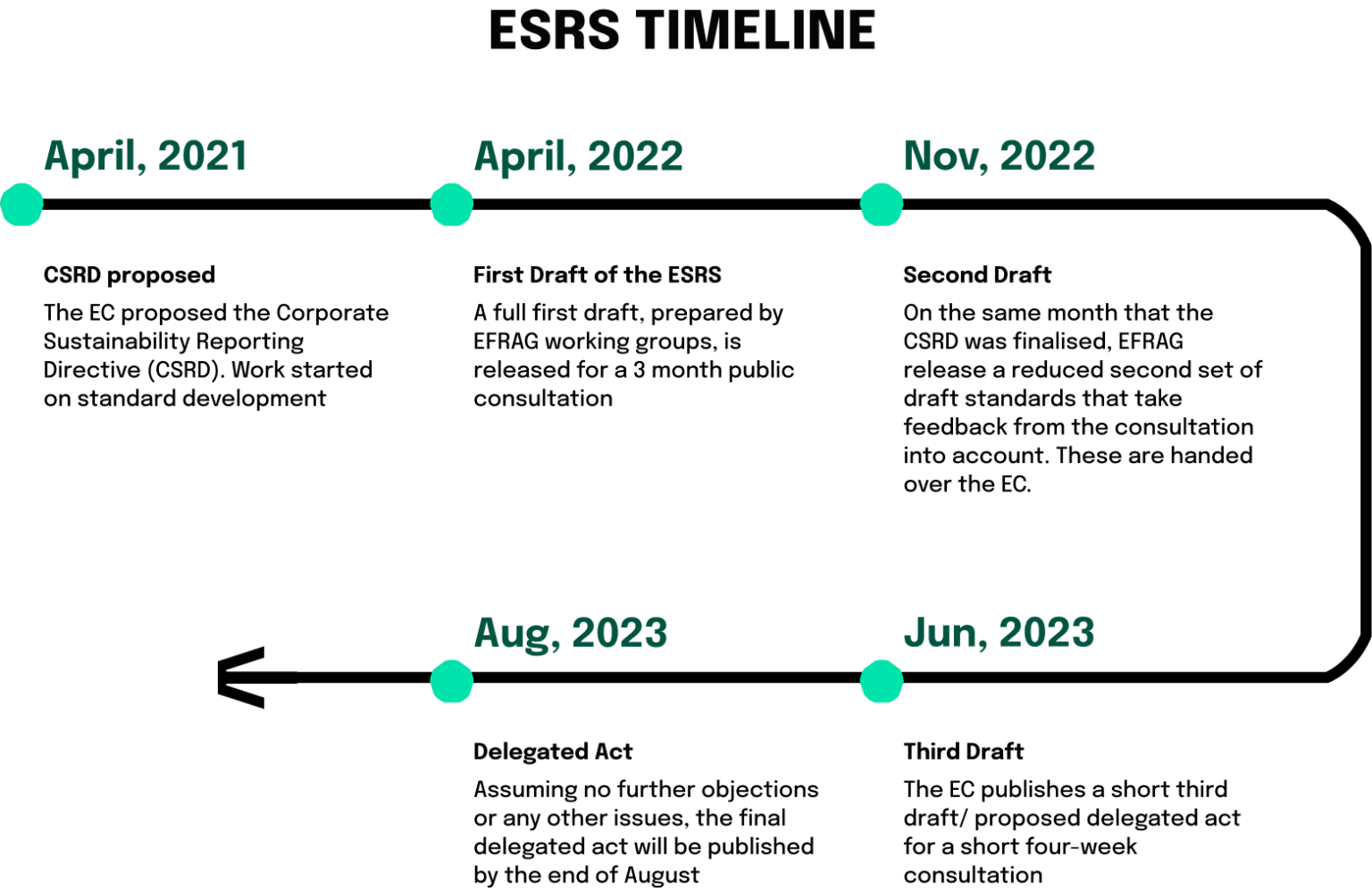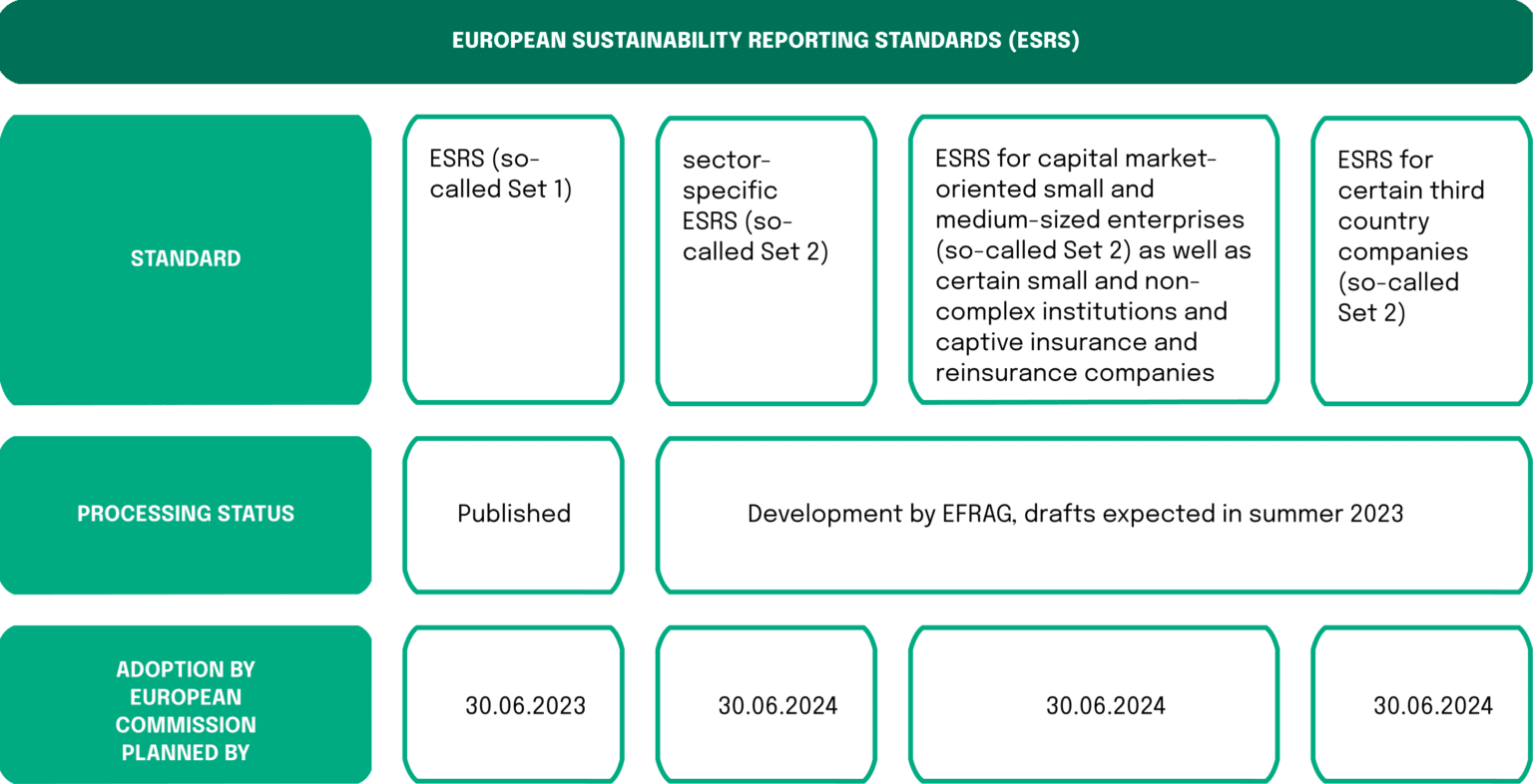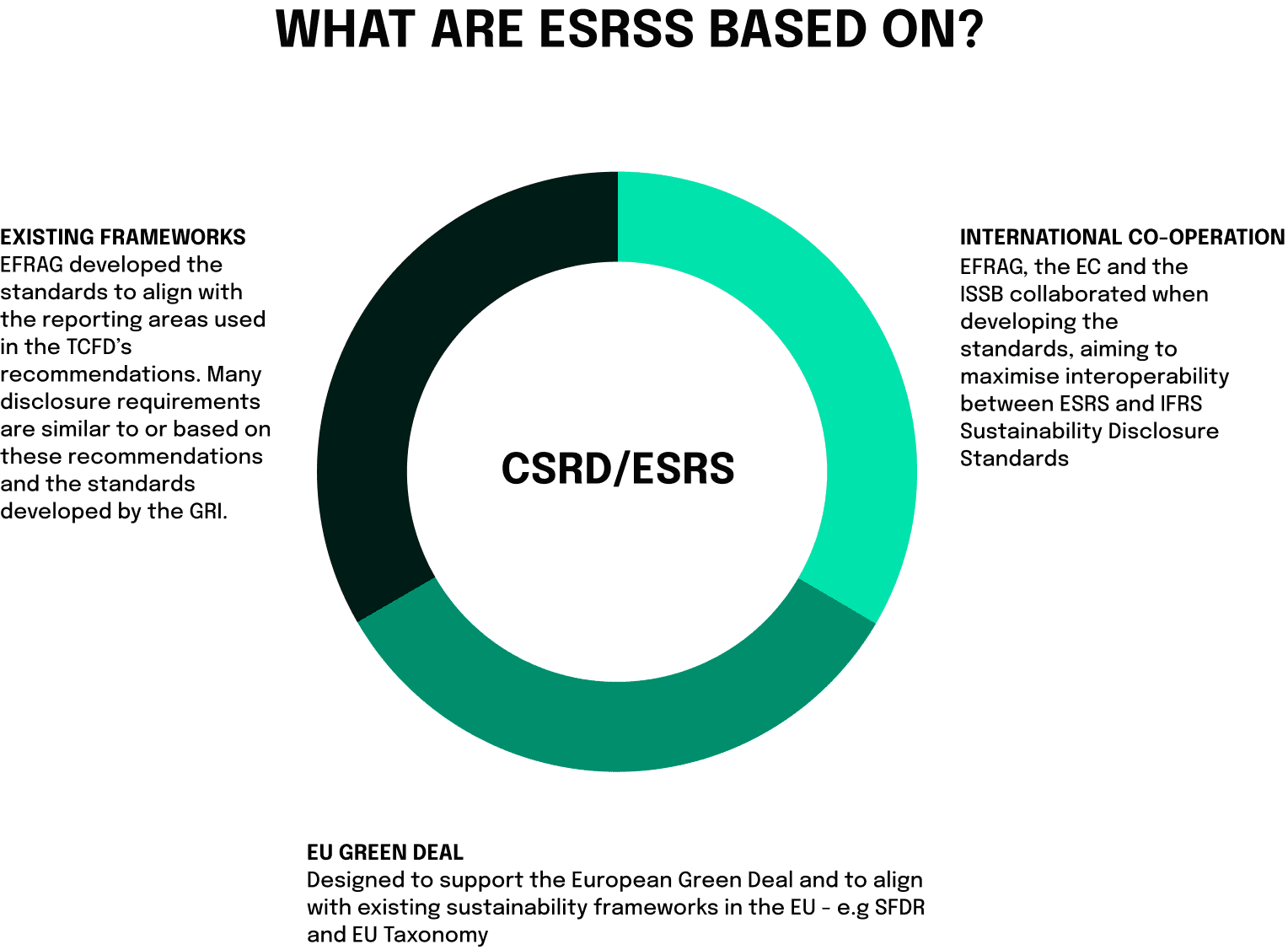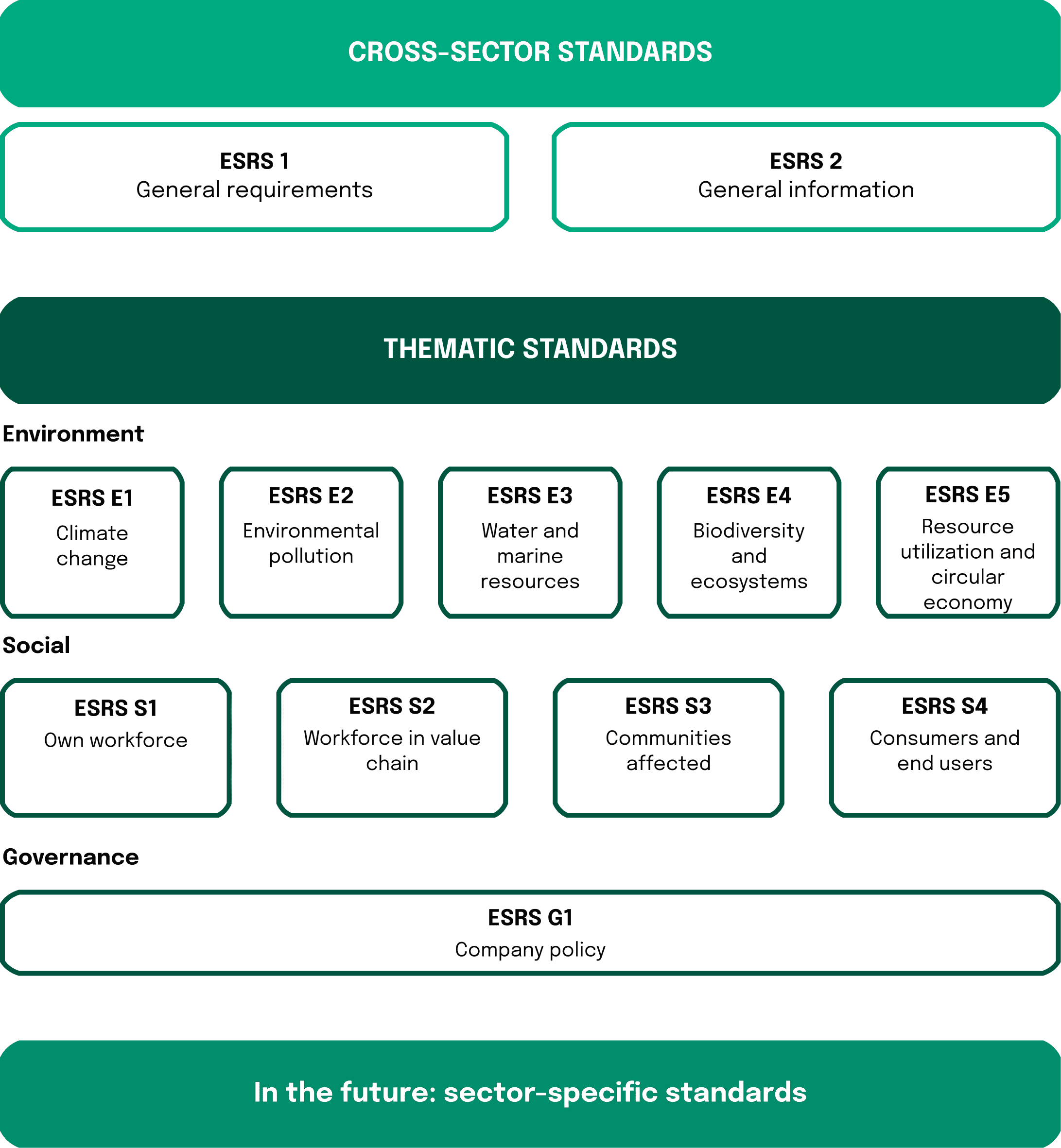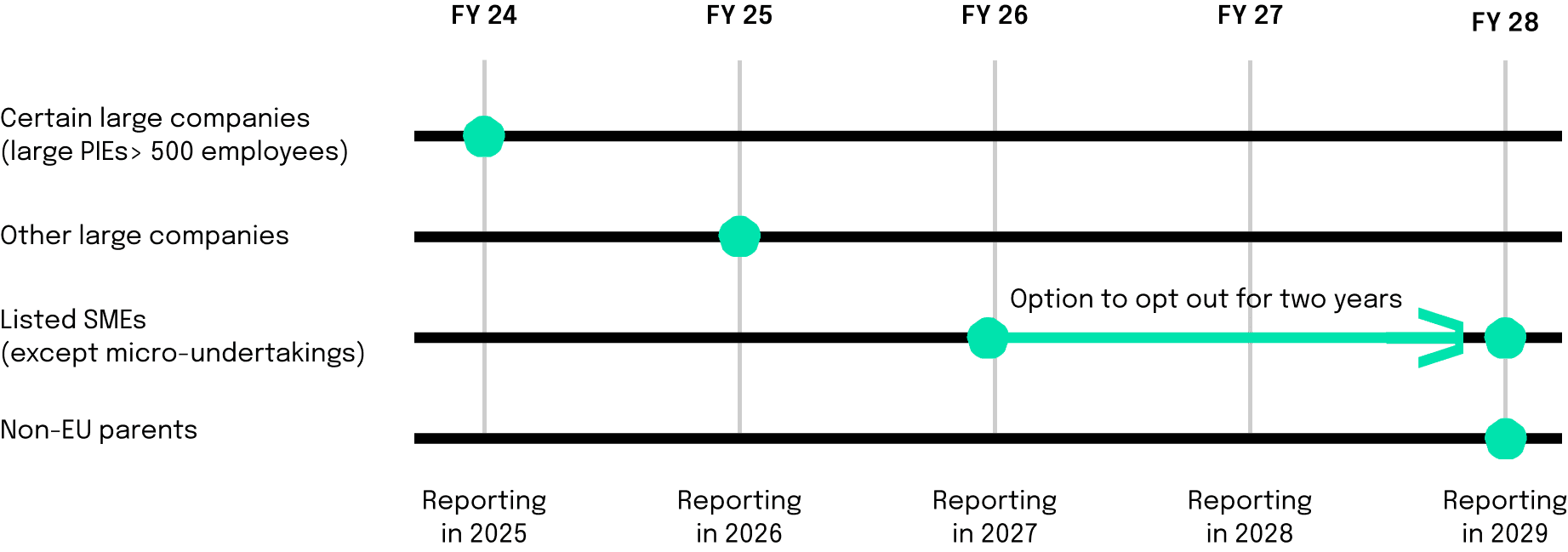The introduction of the CSRD and the ESRS has ushered in a new era for the finance industry. Let’s delve into how these changes are influencing various facets of the sector.
For many banks and financial companies, the CSRD isn’t merely a regulatory hurdle; it’s a transformative opportunity. Here’s how:
- Investing with insight: Detailed reporting on sustainability performance opens up a new vista for financial institutions. It’s not just about numbers; it’s about aligning investments with sustainability goals, and fostering a transparent and responsible investment landscape.
- Managing risks, maximizing opportunities: Understanding sustainability risks isn’t just good practice; it’s essential for robust risk management. By recognizing and mitigating these risks, financial institutions can navigate a complex landscape with confidence and agility.
- Meeting the demand for sustainable products: Today’s customers and investors are savvy and values-driven. By aligning with the CSRD, financial companies can tap into this growing demand, offering products that resonate with a new generation of conscious consumers.
- Trust through transparency: Trust isn’t built overnight, and in the world of finance, it’s a precious commodity. By promoting sustainable investments and being candid about their practices, companies can forge lasting relationships with stakeholders.
- The ripple effect on non-financial companies: The ESRS’s reach extends beyond financial companies. Areas deemed non-material by non-financial companies might be vital for financial firms. Ignoring these areas might lead to reduced funding, as financial companies now face more rigorous reporting requirements.
In today’s business world, innovation is taking on a new dimension. It’s no longer just about inventing new products or services; it’s about a fundamental shift in the way companies operate, embracing new business practices, product paradigms, and even entire business philosophies.
The finance industry finds itself at the heart of this transformation. By strategically investing in companies that are not merely adapting but actively leading this change, financial institutions become more than investors; they become partners in progress.
The introduction of fresh reporting standards has provided the finance industry with a new perspective. These standards aren’t just rules to follow; they’re tools that enable financial professionals to discern which companies are genuinely driving innovation and positive impact.
This isn’t just a business opportunity; it’s a call to action. It’s about identifying, supporting, and growing those companies that are forging new paths, those that are committed to more than just the bottom line. By aligning with these pioneers, the finance industry is not only investing in promising businesses but also in a future where success is defined by responsibility, purpose, and transformative growth.



